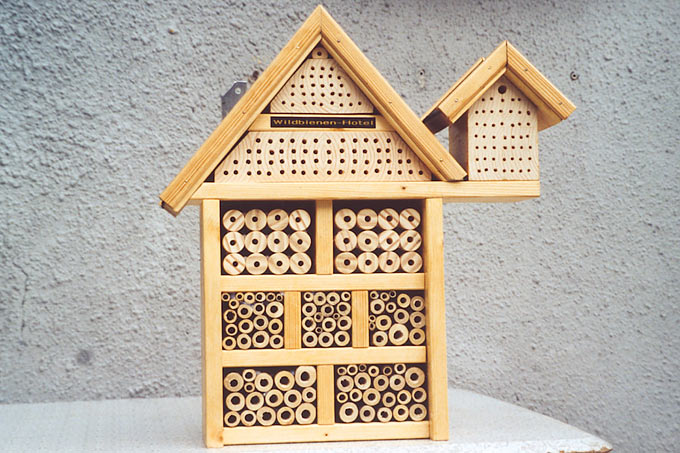 With bees, Bumblebees and lacewings come to life in the garden
With bees, Bumblebees and lacewings come to life in the garden
Insects are often viewed only as troublemakers. But many of them relieve the gardener of the work of plant protection and also attract birds into the garden.
bees, bumblebees, wasps, hornets: To many people, the yellow-black fliers are all equally eerie—as are most insects. In Germany alone there are over 10 000 species, which, with very few exceptions, are harmless to humans and indispensable in the cycle of nature. Because they perform important services in plant pollination and pest control: After all, are 70 economically used plant species depend on pollination by insects.
But climate change and chemical pollution from herbicides and insecticides have already led to an alarming decline in biodiversity, add to this the lack of nesting places in tidy gardens and perfectly plastered houses.
Insects nest in cracks and joints in walls, they use holes drilled by beetles in rotten tree trunks or fence posts. These "natural" nesting sites are disappearing more and more, but they are easy to replace, as the examples on these pages show. Drilled blocks of wood, perforated brick, Bundles of hollow culms or twigs are a tempting proposition to hymenoptera such as bees, parasitic wasps or hoverflies. The hollow stems of perennials are also popular as winter quarters, pruned before winter in a "tidy" garden. Of course, there must also be enough food sources in the vicinity of the nesting aids. A piece of meadow, a corner with stinging nettles, Flowers and local shrubs can become an always set table for insects. Collect alone at the Salweide 34 wild bee species their pollen!
Cairns as a nesting place
A heap of untidy boulders becomes a playground for lizards, when the stones have warmed up in the sun. underneath, where it's cooler, common toads feel good.
What are wasps good for??
Everyone has asked themselves this question over afternoon coffee in the sunny garden, because the "blackheads" are often very annoying.
But more important than cake are flies as food for wasps, because that's what the larvae are fed with. Biologists have observed, that 60 Wasp workers within an hour 227 brought insects into their nest.
More feared than wasps are the twice as large hornets. Wrongly, because if they are not threatened, don't attack them, and a hornet sting is painful, but usually as harmless as a wasp sting. Hornets are appreciated, because they eat oak moth caterpillars and pine bush sawflies. Aphids are on the menu of aphid parasitic wasps, Florfliege, Hoverfly and catchy tune. White parasitic wasps have specialized on cabbage whites, Sandknot wasps eat weevils and ant maidens. Bumblebees and bees are essential for pollination. Without them there would be no delicious apples or cherries in the garden.